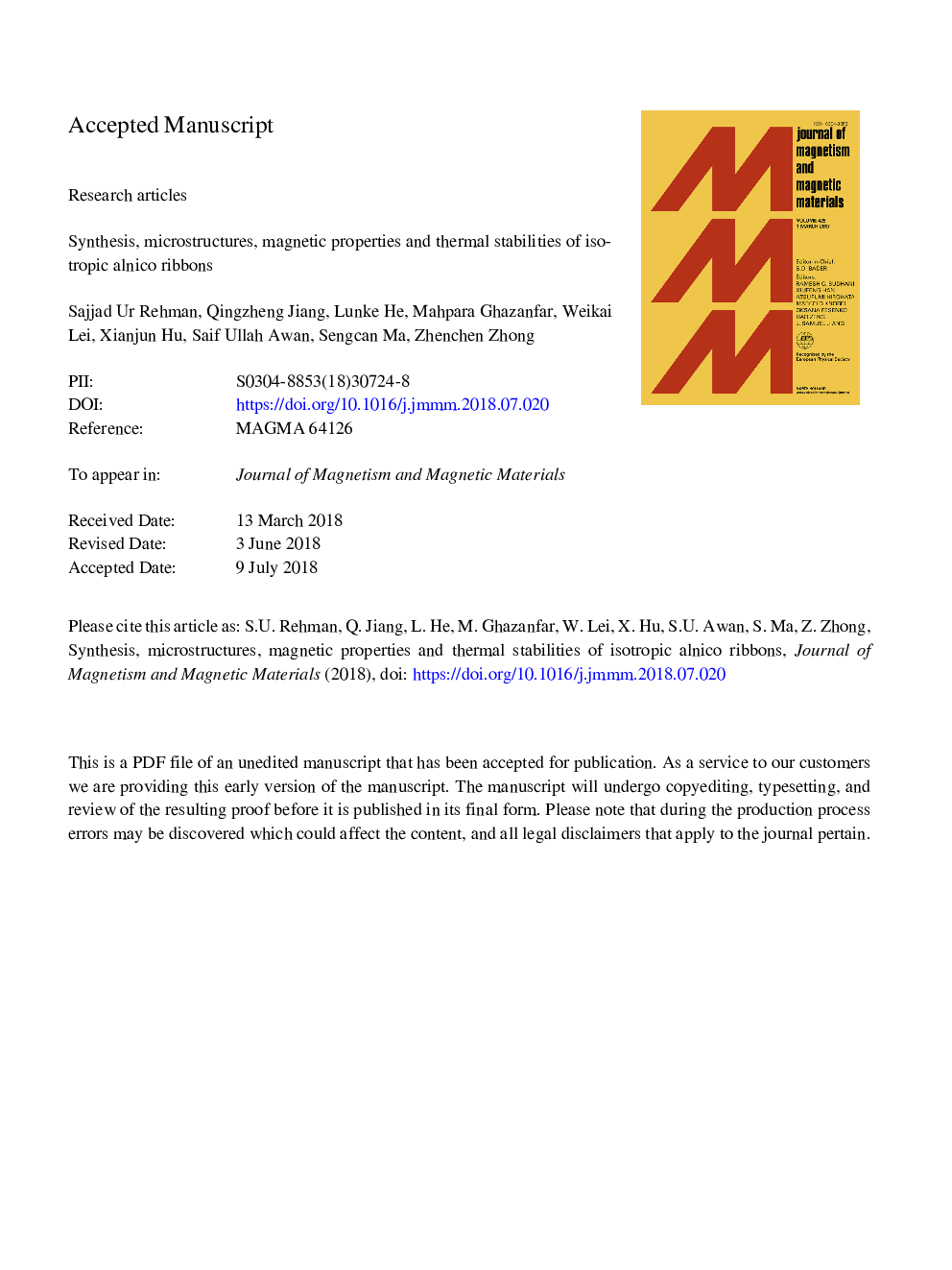| Article ID | Journal | Published Year | Pages | File Type |
|---|---|---|---|---|
| 8152625 | Journal of Magnetism and Magnetic Materials | 2018 | 15 Pages |
Abstract
Reducing the spatial dimension of ferromagnetic (α1) phase is the most promising route for coercivity enhancement of alnico alloys. It is an experimental fact that the spatial dimension of α1 phase cannot be reduced below a certain limit (â¼25â¯nm) using conventional processing methods. To obtain finer α1 phase we have fabricated alnico ribbons with nominal composition of 32.2Fe-36Co-13.5Ni-7.6Al-6.2Ti-3.8Cu-0.5Zr-0.2B by melt spinning and subsequent heat treatments. Very fine Fe-Co rich (α1) rods of the order of 5â¯nm diameter and 100â¯nm length embedded in Al-Ni rich matrix are obtained. After simplified heat treatment the properties of the isotropic ribbons are Hcjâ¯=â¯770â¯Oe, Brâ¯=â¯6.5â¯kGs and (BH)maxâ¯=â¯1.86â¯MGOe. It is shown that alnico ribbons have unprecedented thermal stability described in terms of temperature coefficient of remanence (α) and temperature coefficient of coercivity (β) by measuring magnetic properties at high temperatures (â¼800â¯K). The microstructures of the alloys have been analyzed by Optical Microscope, Scanning Electron Microscope and Transmission Electron Microscope. The phase transition temperatures have been observed by DTA and magnetic properties are measured by PPMS.
Related Topics
Physical Sciences and Engineering
Physics and Astronomy
Condensed Matter Physics
Authors
Sajjad Ur Rehman, Qingzheng Jiang, Lunke He, Mahpara Ghazanfar, Weikai Lei, Xianjun Hu, Saif Ullah Awan, Shengcan Ma, Zhenchen Zhong,
